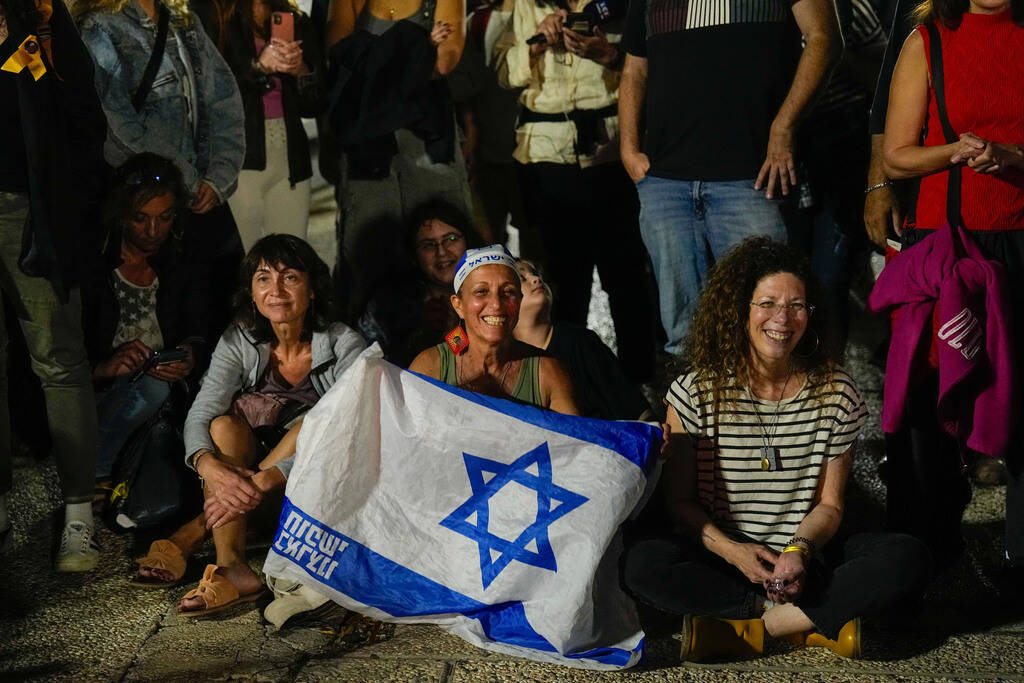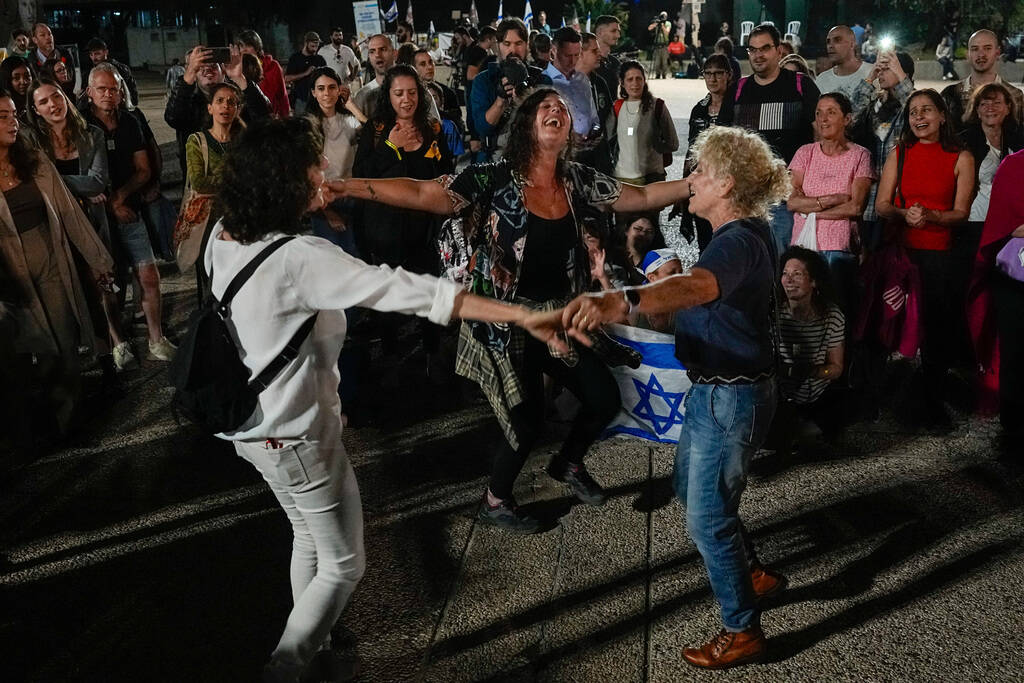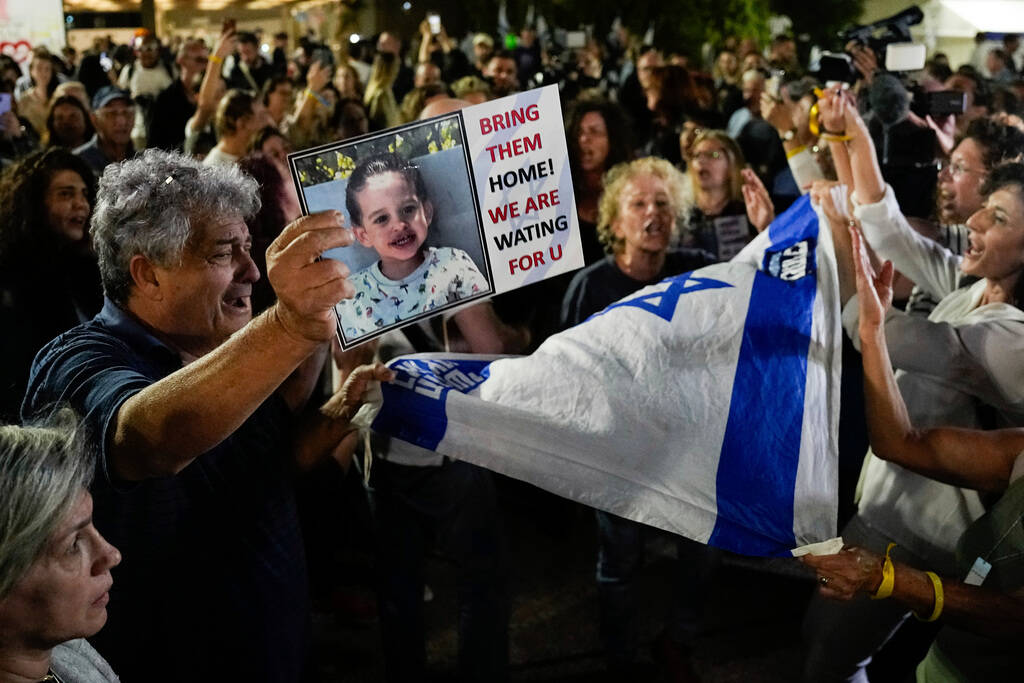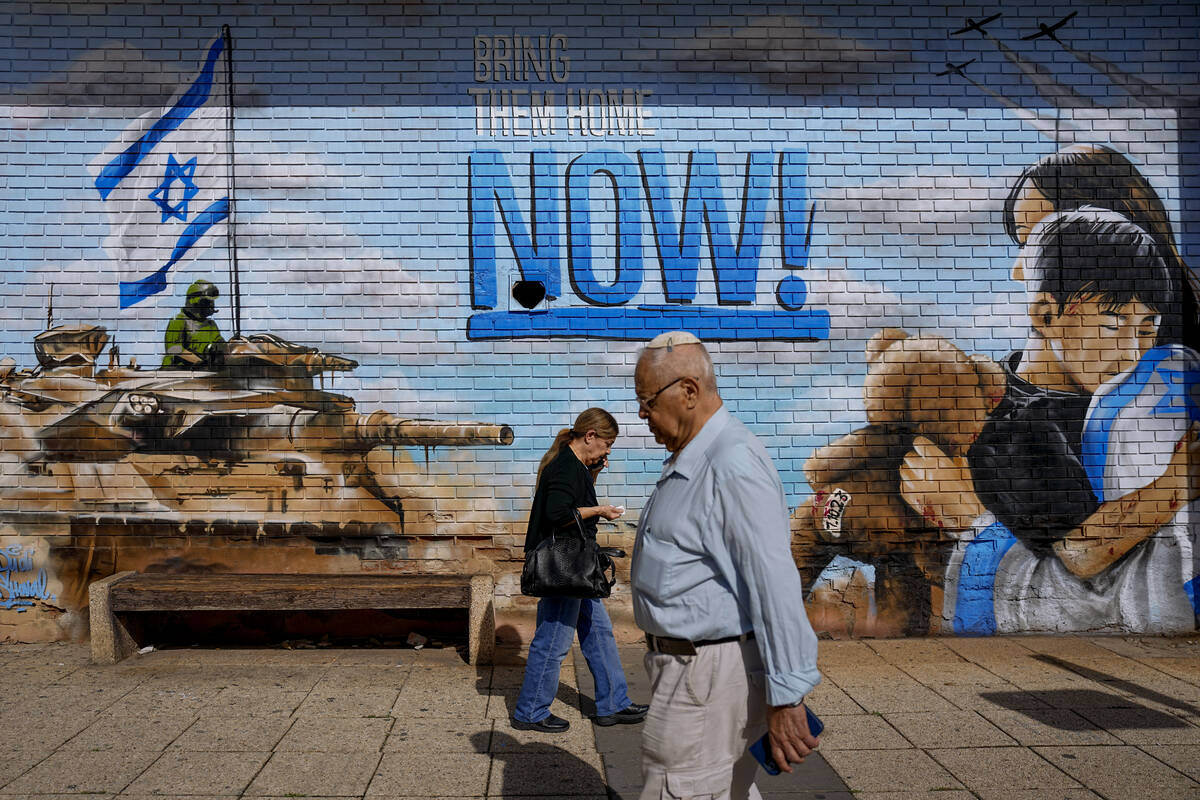Hamas, Israel carry out first swap of hostages and prisoners under cease-fire
RAFAH, Gaza Strip — Hamas on Friday released 24 hostages it held captive in Gaza for weeks, and Israel freed 39 Palestinians from prison in the first stage of a swap under a four-day cease-fire.
Israel — wrenched by the abduction of nearly 240 people in Hamas’ Oct. 7 terrorist attack that triggered the war — cheered as 13 Israeli women and children emerged free from Gaza. Most were in their 70s or 80s, and the youngest was a 2-year-old. Also released were 10 people from Thailand and one from the Philippines.
In Gaza, the truce’s start Friday morning brought the first quiet for 2.3 million Palestinians from relentless an Israeli retaliatory bombardment that has killed thousands.
Rocket fire from Gaza terrorists into Israel went silent as well.
Increased supplies of food, water, medicine and fuel promised under the deal began to roll into Gaza.
Israel says the cease-fire could be extended if more hostages are released, but it has vowed to resume its retaliatory offensive once the truce ends.
FIRST HOSTAGES FREED
Under the deal, Hamas is to release at least 50 hostages, and Israel 150 Palestinian prisoners over the four days. Both sides were starting with women and children.
Israel said the four-day truce can be extended an extra day for every additional 10 hostages freed.
After nightfall Friday, a line of ambulances emerged from Gaza through the Rafah Crossing into Egypt carrying the freed hostages, as seen live on on Egypt’s state-run Al-Qahera TV. The freed Israelis included nine women and four children 9 and under.
The released hostages were taken to three Israeli hospitals for observation.
The Schneider Children’s Medical Center said it was treating eight Israelis — four children and four women — and that all appeared to be in good physical condition. The center said they were also receiving psychological treatment, adding that “these are sensitive moments” for the families.
At a plaza dubbed “Hostages Square” in Tel Aviv, a crowd of Israelis celebrated at the news.
Yael Adar spotted her mother, 85-year-old Yaffa Adar, in a TV newscast of the release and was cheered to see her walking.
“That was a huge concern, what would happen to her health during these almost two months,” she told Israel’s Channel 12.
But Yael’s 38-year-old son, Tamir Adar, remained in captivity. Both were kidnapped on Oct. 7 from Kibbutz Nir Oz. “Everyone needs to come back. It’s happiness locked up in grief.”
The hostages included multiple generations.
Nine-year-old Ohad Munder-Zichri was freed along with his mother, Keren Munder, and grandmother Ruti Munder. The fourth-grader was abducted during a holiday visit to his grandparents at the kibbutz where about 80 people — nearly a quarter of all residents of the small community — are believed to have been taken hostage.
Hours later, 24 Palestinian women and 15 teenagers held in Israeli prisons in the occupied West Bank and east Jerusalem were freed.
The teenagers had been jailed for minor offenses like throwing stones. The women included several convicted of trying to stab Israeli soldiers, and others who had been arrested at checkpoints in the West Bank.
According to the Palestinian Prisoners’ Club, an advocacy group, Israel is currently holding 7,200 Palestinians, including about 2,000 arrested since the start of the war.
CEASE-FIRE TAKES HOLD
After the truce began Friday morning, four trucks of fuel and four trucks of cooking gas entered from Egypt, as well as 200 trucks of relief supplies, Israel said.
Israel has barred all imports into Gaza throughout the war, except for a trickle of supplies from Egypt.
During the truce, Israel agreed to allow the delivery of 34,340 gallons of fuel per day.
Most of Gaza’s 2.3 million people are crowded into the southern portion of the territory. The calm brought a chance for displaced residents of the south to visit homes and retrieve some belongings.
But the hundreds of thousands who evacuated from northern Gaza to the south were warned not to return in leaflets dropped by Israel. Israeli troops hold much of the north, including Gaza City.
Still, hundreds of Palestinians tried walking north Friday. Two were shot and killed by Israeli troops and another 11 were wounded.
Israel’s northern border with Lebanon was also quiet on Friday, a day after the terrorist Hezbollah group, an ally of Hamas, carried out the highest number of attacks in one day since fighting there began Oct. 8.
Hezbollah is not a party to the cease-fire agreement but was widely expected to halt its attacks.
A LONGER PEACE?
The war erupted when several thousand Hamas terrorists stormed into southern Israel, killing at least 1,200 people, mostly civilians, and taking scores of hostages, including babies, women and older adults, as well as soldiers.
The hope is that “momentum” from the deal will lead to an “end to this violence,” said Majed al-Ansari, a spokesman for the Foreign Ministry of Qatar, which served as a mediator along with the United States and Egypt.
But hours before it came into effect, Israeli Defense Minister Yoav Gallant told troops that their respite would be short and that the war would resume with intensity for at least two more months.
Prime Minister Benjamin Netanyahu has also vowed to continue the war to destroy Hamas’ military capabilities, end its 16-year rule in Gaza and return all the hostages.
The Israeli offensive has killed more than 13,300 Palestinians, according to the Health Ministry in the Hamas-run Gaza government. The figure does not include updated numbers from hospitals in the north, where communications have broken down.
The ministry says some 6,000 people have been reported missing, feared buried under rubble. The ministry does not differentiate between civilians and terrorists in its death tolls.
Israel says it has killed thousands of Hamas fighters.
———
Federman reported from Jerusalem, Jeffery from Cairo. Associated Press writers Bassem Mroue in Beirut and Julia Frankel in Jerusalem contributed.

























